Nina Notman opens her lab notebook to find a recipe fit for a queen
Introduction and aims
The quintessential British ritual of afternoon tea began around 1840. It was the creation of Anna Maria Russell, the Duchess of Bedford and lifelong friend of Queen Victoria, who reportedly introduced the idea to fill her need for a little sustenance in the late afternoon.
Friends were invited to join her in enjoying a selection of finger sandwiches, scones, pastries and fancy cakes at around 4pm. Amongst the delicacies on offer were ‘new’ light and fluffy cakes, only possible thanks to the then-novel chemical leavening agents.
The purpose of a chemical leavener – or raising agent – is to execute an acid–base reaction in a batter producing carbon dioxide bubbles that help the cake to rise. Bakers first experimented with this idea in the 1830s, using a combination of the base sodium bicarbonate (baking soda, NaHCO3) and lactic acid (in the form of sour milk) in their recipes.
Today, however, most cake recipes opt for the convenience of an all-in-one chemical leavener: baking power. Birmingham-based pharmacist and Chemical Society fellow Alfred Bird (of instant custard fame) took the first stride towards one of these in 1843, replacing sour milk with a by-product from wine-making, cream of tartar (powdered potassium hydrogen tartrate). The acid and base were wrapped separately to prevent moisture triggering the carbon dioxide production before it was added to a recipe.
The aim is to make a liquid material that will turn into a light solid foam when baked
It was another chemist, Eben Horsford of Harvard University in the US, who produced the first all-in-one baking powder containing sodium bicarbonate, acidic calcium dihydrogen phosphate and corn starch (to absorb any moisture present during storage). Baking powder recipes have been tweaked over the years but this three-component design – base, acid and a moisture absorber – has held firm.
Queen Victoria was reportedly a huge fan of one chemically leavened sweet treat in particular: a plain sponge filled with jam and sometimes cream or buttercream. This recipe became known as the Victoria sponge or the Victoria sandwich. In this article, a mixture of chemists, professional bakers and food manufacturers tells Chemistry World more about the science behind what is today still one of the UK’s most popular cakes.
Any good scientist needs to know the over-arching purpose of their experiment before they proceed, of course. ‘The aim is to make a liquid material, a batter, that will turn into a light solid foam when baked,’ explains food science author Harold McGee from San Francisco, US.
Procedure
Starting materials
The traditional Victoria sponge recipe has five core ingredients: fat, sugar, eggs, wheat flour and chemical leaveners. Most of these starting materials, therefore, play multiple roles in the final product. It simply isn’t known exactly what is happening and why during all the stages of the Victoria sponge cake baking processes. There is, however, plenty that we do know.
Beat together fat and sugar
In a traditionally-made Victoria sponge, the first step is to mix the fat and sugar. ‘When you beat butter with the sugar, you are mechanically adding air into your mixture from step one, which will lead to a lighter end product,’ says Janice Lawandi, a freelance food science consultant with a chemistry PhD who is based in Montreal, Canada, and blogs about baking science.
If solid fat, such as butter, is being used it should be at room temperature to make it more pliable and ‘easier to mix evenly throughout the cake batter’, explains Ali Bouzari, culinary scientist with a PhD in food biochemistry at the food development consultancy Pilot R+D in California, US.
Add the eggs
Eggs are then mixed into the fat-sugar mixture to form an emulsion. It’s the amphiphilic phospholipid lecithin in yolk that gives eggs their emulsifying properties.
The eggs should be room temperature too. ‘If you incorporate cold eggs into a room temperature batter, your butter is going to harden and then you’re going to have chunks of butter in your cake batter,’ says Lawandi. Lumps of butter will lead to holes in the finished cake, she adds.
Stir in flour and raising agents
Dry ingredients are the added to the mixture. Self-raising flour (known in the US as self-rising) already contains sufficient baking powder for a Victoria sponge cake, explains Lawandi. ‘Adding additional chemical leaveners can lead to the batter being overleavened,’ she adds, meaning the cake may collapse when taken out of the oven.

Most recipes advise mixing by hand at this stage, to avoid overbeating the flour and, therefore, forming too much gluten. Contrary to popular belief, gluten isn’t naturally present in wheat flour (and many other flours). But its precursor proteins – glutenin and gliadin – are instead. When the pair are hydrated and mechanically pushed together, they form hydrogen bonds between the amino acids of the proteins, explains chemist James Cumby, who teaches a chemistry of food class at the University of Edinburgh in the UK . The resulting gluten network ‘you can think of as being like a co-polymer’, he adds.
Gluten provides strength and elasticity to a recipe which, while highly important in bread-making, isn’t desirable in cakes. This is why flour used for cakes is much lower in protein content than that intended for bread making. Overbeating during flour incorporation can result too much gluten forming and potentially lead to an overly tough cake. Reassuringly, Bouzari notes that cake batter isn’t as precious as many recipes make out. ‘You can abuse it a little bit more than most people let on,’ he says.
Bake in the oven
The cake batter is then split between two round baking tins and placed in a pre-heated oven. Here, the batter will turn into a solid foam – a material-type comprised of solid frameworks surrounding gas-filled voids. The finished solid framework in a Victoria sponge cake has two distinct building block sets: one set from the egg white and the other from starch in wheat flour. ‘They are the bricks and mortar of the finished cake,’ says McGee.
Egg whites contain globular proteins tightly folded into an approximately spherical shape. ‘When you heat them up, they unravel and then start to hydrogen bond to, and form disulfide links with, one another,’ says Cumby. This process, called coagulation, results in a solid structure. ‘The little threads of egg protein [in the batter] begin to coagulate as the temperature goes up to form a very fine version of what we see when we fry or boil an egg,’ explains McGee.
Gluten’s elasticity allows it to catch bubbles during baking and rise upwards
Wheat flour starch contains two glucose-based polysaccharides: amylose and amylopectin. Hydrogen bonds hold both polymers in tight coils. But once hydrated and heated, they absorb water, swell and lose their tight structure. ‘As soon as it’s unravelled, you get many more hydrogen-bonding interactions between the different sugar units until you form a gel,’ says Cumby. This process is called starch gelatinisation. ‘Then as you heat it more, you drive more of the water out, and a solid network remains,’ he adds.
The gas-filled voids contain gases from three different sources: air, mechanically added during the sugar-fat creaming step; carbon dioxide from the acid–base reaction of the chemical leaveners; and water vapour formed as the moisture in the batter evaporates during baking.
The baking process of the Victoria sponge is carefully orchestrated to prevent gas bubbles from escaping. Different tools are employed at different stages of the baking process. At the beginning of the baking process gluten fulfils this role. ‘Gluten’s elasticity allows it to catch [bubbles] during baking and rise upwards – sort of like a hot air balloon – to allow the product to expand,’ explains Bouzari. Then, the newly-formed starch and egg protein networks near the exterior of the cake step-up to trap wannabe escapees.
During the cake framework construction process, the building efforts of the egg white proteins, flour starch and gluten are constantly being undermined by the presence of sugar and fat. This is known as tenderising and without these interactions cakes would be much more tough and chewy – like bread. Sugar and fat molecules are thought to disrupt – and therefore weaken – the crossbeams on the frameworks. ‘The trick in formulating cakes is to get that balance right, so that you have enough structure-building materials to maintain that structure in the presence of these other materials that make the cake delicious but then also weaken the structure,’ says McGee.
Towards the end of the baking process, two chemical cascades are triggered on the crust to create the delicious flavour molecules we associate with part of the cake. ‘They generate that wonderful, rich, caramelised, brown aroma,’ says McGee.
First, a group of two-step reactions occur between various amino acids in proteins and monosaccharides such as glucose. These are collectively known as the Maillard reaction. The amino acids and sugars react to form ketosamines, and then react onwards to produce various flavour molecules such as pyrazines, pyrroles and furans.
The trick in formulating cakes is to get that balance right
At higher temperatures again, multi-step caramelisation reactions occur between complex sugar molecules and water. The complex sugars breakdown into monosaccharides, then oligomerise before finally self-assembling into small particles. ‘We know the size of these particles and that they contain a certain ratio of carbon, hydrogen and oxygen, but that is all the science that is really known about caramelisation,’ says Cumby.
This article just covers each of the cake ingredient’s main roles; they all have additional supporting parts in the final production. When you consider what an intricate dance they do during both the mixing and baking of a Victoria sponge cake, it’s hardly surprising that substituting out some of these starting materials can be quite so challenging for bakers who want to avoid gluten, dairy proteins or eggs (see box Starting material substitutes).
Starting material substitutes
With more awareness of dietary requirements to avoid foods – such as gluten, dairy, eggs or meat products – due to intolerance, allergies, ethics or simply taste, both home and professional bakers need to know about the alternatives to their standard reagents.
- Chemical leaveners: It doesn’t matter if you use an all-in-one baking powder or baking soda and sour milk (or butter milk, sour cream, crème fraiche etc) to chemically leaven the Victoria sponge cake.
- Fat: A variety of fats, from butter to margarine to oil, are also suitable. ‘For a sponge cake, you could use just about any edible lipid source and it will work reasonably well and potentially give you some unique outcomes,’ says Bouzari.
- Sugar: Alternative sugars can be used too. Brown sugar, for example, will lead to a darker cake with different favour profile due to its molasses content. Honey will require some recipe tweaking to ensure the final cake isn’t too wet. Fear not, reassures Lawandi: ‘All roads lead to cake.’
- Eggs: To make a vegan Victoria sponge cake, eggs can be substituted with ingredients such as plant-based yoghurts and milks or aquafaba (the liquid from a can of chickpeas). Tweaks to the other ingredient ratios may be needed to ensure a balanced bake. ‘With the eggs, you’re really looking to replace them with some sort of binder, to replace the actions of the adhesive proteins in egg white, and also something to emulsify, to replace the lecithin in egg yolks,’ explains Matt Hartings, a chemistry professor at American University in Washington DC, who teaches a class on kitchen chemistry. ‘There are lots of things from the food material world that we can use.’
- Wheat flour: The wheat flour is the hardest ingredient to substitute in cake. ‘Flour is a very much a Swiss army knife, the multipurpose tool of baking,’ Bouzari says. The largest challenge is replacing the strength and texture performance of the starch and gluten networks.
Gluten-free homebakers can make their own flour blends or buy commercial ones. These contain a mixture of various flours such as rice, potato and tapioca to provide starch, and a hydrocolloid to provide stickiness. ‘Most gluten-free flour blends contain binding gums like xanthan gum and guar gum – they create just enough bind and structure so baked goods don’t collapse and break apart,’ explains Sarah House, an R&D chef at Bob’s Red Mill, a food producer in the US state of Oregon.
‘Xanthan gum is the simplest readily-available hydrocolloid that’s going to give the required elasticity,’ says Alexander Talbot, co-owner of culinary consultancy Ideas in Food and the Curiosity Doughnuts shop in Pennsylvania, US. However, for ‘delicate items like cakes it may possibly forgo gums altogether, [and use] alternatives like eggs, flaxseed meal, or ground chia seed for bind’, adds House.
Allow to cool
Once cooked, the cake should be left in the tins for a few minutes to allow the framework to fully harden. ‘This is because during those first two to four minutes when a cake comes out of the oven is when it’s at its least supported and most jiggly. You want to try to manipulate it as little as possible until it’s had a couple of minutes to cool down and solidify,’ says Bouzari.
The cake should then be turned out and left upside down to cool to room temperature. ‘That helps to even the moisture distribution within the cake, because the water that’s within a cake is only able to escape out the top as it’s baking,’ Bouzari says. ‘Coming straight out of an oven, most cakes will be moister on the bottom than on the top, so by flipping the cake over as it cools, you’re allowing the underside of the cake to get some time to catch up and get rid of some excess steam.’
Make the fillings
‘The age-old jam recipe is equal amounts fruit and sugar and cook it until it sets,’ says Walter Scott, food scientist and chairman of Tiptree Jam maker Wilkin & Sons in Essex, UK.
It is the starch pectin, a polysaccharide naturally present in fruit, which enables this mixture to set into the colloidal gel that we recognise as jam. It is released from the fruit at the setting point of jam – about 104°C. Its long chains then bind together through intermolecular interactions, and form the gel framework that then traps the sugary liquid and supports suspended fruit pieces.
As many amateur jam makers attest, however, it’s rarely quite that simple. Setting dramas are usually due to either a lack of pectin or too high a pH.

Pectin concentrations vary between fruits. Strawberries and raspberries are low in pectin, while blackcurrants and citrus fruits have more. To overcome this, extra pectin can be added or special jam sugars containing added pectin used. ‘The amount of pectin in fruits varies through the season,’ says Walter Scott, meaning the recipe has to be constantly tweaked throughout the year. ‘This is done by trial and error during the cooking process, because extraction from raw material is a really expensive and slow test,’ explains Joel Scott, head of technical grocery for the Hain Daniels Group in Cambridge, UK – the makers of Hartley’s Jam.
For jam to set, its pH needs to be around three. Pectin chains naturally have a slight negative charge on the carboxylic acid groups meaning that they repel each other. In a slightly acidic environment, these groups are protonated and repulsion is less of an issue. If it’s too acidic, however, the pectin gets damaged. The pH can be pulled down with lemon juice, citric acid or tartaric acid and again trial and error is the key.
Another key parameter is the boiling time. It’s shorter than many people think, explains Walter Scott. The mixture needs to be boiled long enough for the pectin to form, but not so long that it burns. At home, and at the Tiptree jam factory, jam is boiled at atmospheric pressure. ‘This results in a degree of caramelisation,’ says Walter Scott, and the same reaction pathways occur as for the cake itself. At Hartley’s, however, the boiling is conducted at a lower pressure and therefore lower temperature, resulting in a different flavour profile.
Discussion and conclusion
Now all the components of your Victoria sponge are ready, the undersides of the two cakes layers should be spread with jam, and if desired cream or buttercream, before being sandwiched together. All that’s left is to round up your friends – if current pandemic rules permit – and sit down to enjoy the queen of the cakes.
It’s like designing your own experiment every time you bake
With so much of baking having a scientific foundation, will understanding this scientific back story make you a better baker? Yes, is the universal answer from the experts. ‘It’s true that chemists make some of the best cooks – we’re taught all the transferrable skills in the laboratory that could be used in our kitchens,’ explains Joanna Buckley, a PhD chemist and science communicator who has explained food chemistry on TV and currently works as an education coordinator for the Royal Society of Chemistry. ‘By understanding what each ingredient does in your bake, you’re more able to tweak recipes and improve skills. It’s essentially like designing your own experiment every time you bake. It also helps you understand your more underwhelming offerings.’
Bouzari concurs. ‘Absolutely, I think that every person who picks up a spatula should also have a rough sense of why they’re whipping the cream or why flour is important. Just understanding these basic mechanisms, whether or not you use scientific jargon, is probably the number one most useful way to improve your results and your confidence and your creativity, baking or cooking savoury things at home.’
So whether you’re a Bake Off level expert baker, or a lockdown-inspired novice, taking your chemistry knowledge and practical skills into the kitchen will help you bake up a storm.
Nina Notman is a science writer based in Salisbury, UK
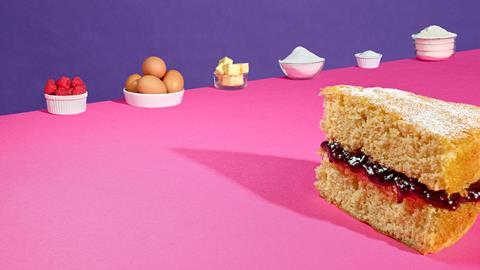
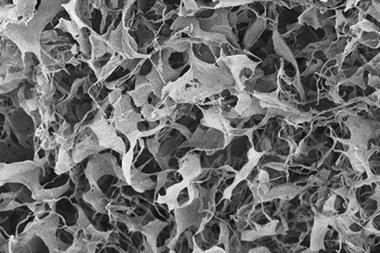
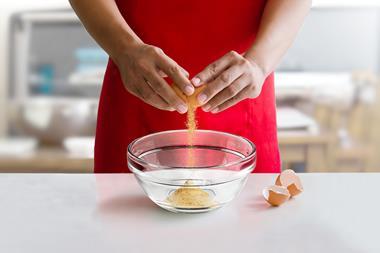
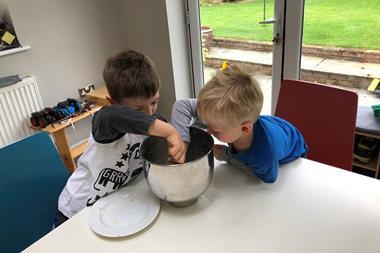
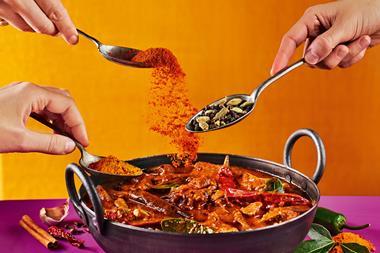
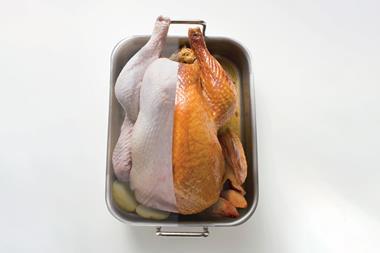







4 readers' comments